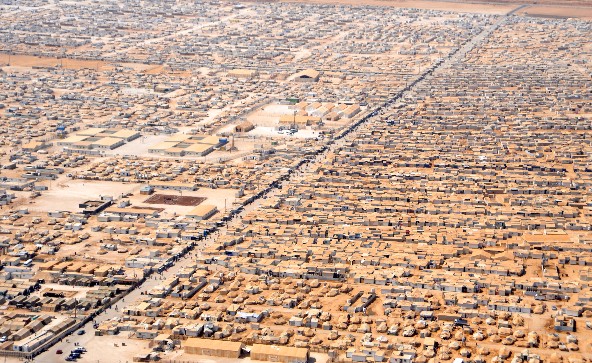 Za'atari Refugee Camp, U.S. Department of State
Za'atari Refugee Camp, U.S. Department of State
Syria’s Future Crisis: A Lost Generation
This past weekend, intense fighting between Daesh and Syrian-Kurds in areas of Northern Syria forced more than 23,000 Syrians to cross into Turkey, adding to the 1.7 million registered Syrian refugees already living in the country.
Since the onset of the Syrian Civil War in March 2011, nearly 4 million Syrians have fled the country for refuge in Turkey, Lebanon, Jordan, Iraq, and Egypt. Many more are estimated to have fled, but have not registered with the UN Refugee Agency (UNHCR).
With more refugees arriving daily, host communities and camps are struggling to meet the immense needs of the Syrian people. Poor funding, dwindling resources, and regional crises all contribute to the degrading situation within the camps. Gender-based violence, economic disparity, and poor living conditions are present in camps across the region, raising health and safety concerns, especially in regard to children.
Children are most vulnerable to the conditions of the camps. They make up 53% of the entire Syrian refugee population, with 1.5 million being under the age of 12. The UN, increasingly concerned with the living conditions of children in refuge, as well as their future prospects, has started an initiative called “The Future of Syria.” The program highlights the problems faced by Syrian child refugees, focusing on education, child labor, and insecurity.
Currently, 3 million Syrian children are not receiving schooling. The potential for a lost generation is greater than ever, with many kids unable to receive schooling, or leaving school to provide economic support for their families.
The Director of the UNHCR, Antonio Guterres, states:
“We have only a narrow opportunity to intervene now as this potentially lost generation confronts its future. Abandoning refugees to hopelessness only exposes them to even greater suffering, exploitation and dangerous abuse”.
Their lack of education will not only degrade Syria’s economic future, but will also weaken the security situation of the region. The Overseas Development Institute warns:
“Lost educational opportunity risks driving young people into radicalized groups, including ISIS.”
Lack of proper schooling and economic opportunity has made and will continue to make disenfranchised refugee children vulnerable to the recruitment efforts of armed groups. Reports have emerged of the Free Syrian Army recruiting boys from the Za’atari refugee camp in northern Jordan. Elizabeth Ferris, of Brookings, states:
“The relationship between the camp and the nearby fighting was hard to ignore: the regularly scheduled buses taking single young men back to Syria from the camp every day… and in the recruitment of young men and boys into the FSA.”
While prolonged poverty and dependence are among the long-term effects of refugee crises, the risk of radicalization is another challenge that must be confronted if there is to be a prospective peace.
Having only raised $924 million of their $4.5 billion goal for this year, the UNHCR is severely underfunded. If an effort is to be made to both help the displaced Syrian people, and stabilize regional and global security, financial support must be given to the UNHCR. Without an economic and social effort to support Syrian refugees, especially children, the threats to American and global security will continue to exist in the region.
Unfortunately, as the Syrian civil war continues and Daesh’s influence grows, it seems unlikely that a solution to the refugee crises will come in the near future. As long as violence continues in Syria, the refugee issue will persist. Understanding the circumstances, the international community must urgently seek a viable alternative to diminish the risk of a permanent Syrian refugee crises.





